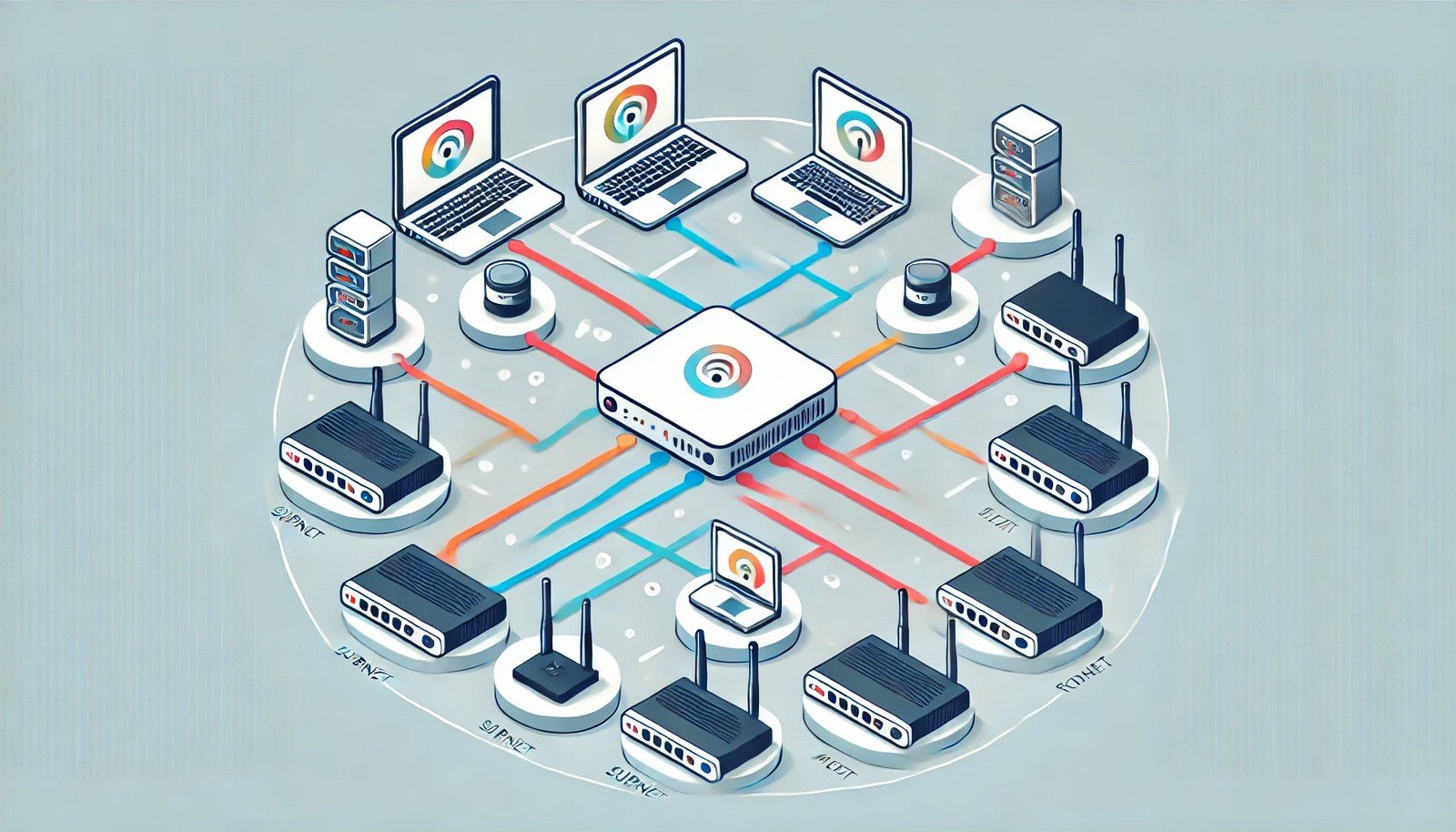Subnet Mask

(Representational Image | Source: Dall-E)
Quick Navigation:
- Subnet Mask Definition
- Subnet Mask Explained Easy
- Subnet Mask Origin
- Subnet Mask Etymology
- Subnet Mask Usage Trends
- Subnet Mask Usage
- Subnet Mask Examples in Context
- Subnet Mask FAQ
- Subnet Mask Related Words
Subnet Mask Definition
A subnet mask is a 32-bit number that divides an IP address into network and host portions. It helps devices determine whether a destination IP address is within the same local network or needs to be routed externally. The subnet mask works in conjunction with an IP address, using binary values to differentiate the network ID from the host ID. Common subnet masks include 255.255.255.0 (for Class C networks), 255.255.0.0 (for Class B), and 255.0.0.0 (for Class A). Subnetting is essential for optimizing network traffic and improving security.
Subnet Mask Explained Easy
Think of an IP address like a home address and a subnet mask like a postal code. The postal code helps sort mail by telling you which neighborhood a house belongs to. Similarly, a subnet mask tells a computer which part of an IP address belongs to the "neighborhood" (network) and which part belongs to the specific "house" (device). If two computers have the same network portion, they can talk directly; otherwise, they need a router to communicate.
Subnet Mask Origin
Subnet masks were introduced as part of the original IPv4 networking system in the 1980s. As networks expanded, the need for dividing larger networks into smaller, more manageable sub-networks (subnets) became evident. This led to the adoption of subnet masks to facilitate efficient data routing and reduce congestion.
Subnet Mask Etymology
The term "subnet mask" comes from "subnetwork," which refers to a smaller section of a network, and "mask," which indicates how it hides or separates portions of an IP address for network identification.
Subnet Mask Usage Trends
Subnet masks have remained a fundamental part of networking, particularly with the continued reliance on IPv4. However, as IPv4 addresses become scarce, IPv6 has introduced a more flexible system with prefix lengths replacing traditional subnet masks. Despite this, subnet masks are still widely used in corporate networks, data centers, and home networking.
Subnet Mask Usage
- Formal/Technical Tagging:
- Networking
- IP Addressing
- Internet Protocol - Typical Collocations:
- "Subnet mask configuration"
- "Subnet mask calculator"
- "Default subnet mask"
- "Custom subnet mask for VLANs"
Subnet Mask Examples in Context
- A network administrator sets a subnet mask of 255.255.255.0 to divide an office network into separate departments.
- Home routers typically use a subnet mask of 255.255.255.0 to allocate private IP addresses to devices.
- Large enterprises implement different subnet masks for security and efficient traffic management.
Subnet Mask FAQ
- What is a subnet mask used for?
A subnet mask determines which part of an IP address belongs to the network and which part belongs to the host. - How does a subnet mask work?
It uses binary values to distinguish the network portion from the host portion of an IP address. - What is the default subnet mask for a Class C network?
The default subnet mask for Class C networks is 255.255.255.0. - Can you change a subnet mask?
Yes, subnet masks can be modified to create different-sized subnets based on network needs. - What happens if subnet masks do not match?
If two devices have different subnet masks, they may not communicate correctly without a router. - What is the difference between a subnet mask and an IP address?
An IP address identifies a device, while a subnet mask determines how IP addresses are grouped into networks. - Why do some networks use a subnet mask of 255.255.255.128?
This subnet mask divides a standard Class C network into two smaller subnets with 126 usable hosts each. - How does a subnet mask help in security?
It isolates network segments, preventing unauthorized access between different subnets. - What is CIDR notation in relation to subnet masks?
CIDR (Classless Inter-Domain Routing) notation represents subnet masks using a suffix (e.g., /24 for 255.255.255.0). - Is a subnet mask required for IPv6?
No, IPv6 replaces subnet masks with prefix lengths to define network segments.
Subnet Mask Related Words
- Categories/Topics:
- IP Networking
- Network Security
- Data Routing
Did you know?
The largest subnet possible in an IPv4 network using traditional subnet masks allows for over 16 million devices to be connected under a single network (255.0.0.0 for Class A). However, modern networks use smaller subnets to improve efficiency and security.
PicDictionary.com is an online dictionary in pictures. If you have questions or suggestions, please reach out to us on WhatsApp or Twitter.Authors | Arjun Vishnu | @ArjunAndVishnu

I am Vishnu. I like AI, Linux, Single Board Computers, and Cloud Computing. I create the web & video content, and I also write for popular websites.
My younger brother, Arjun handles image & video editing. Together, we run a YouTube Channel that's focused on reviewing gadgets and explaining technology.



Comments powered by CComment